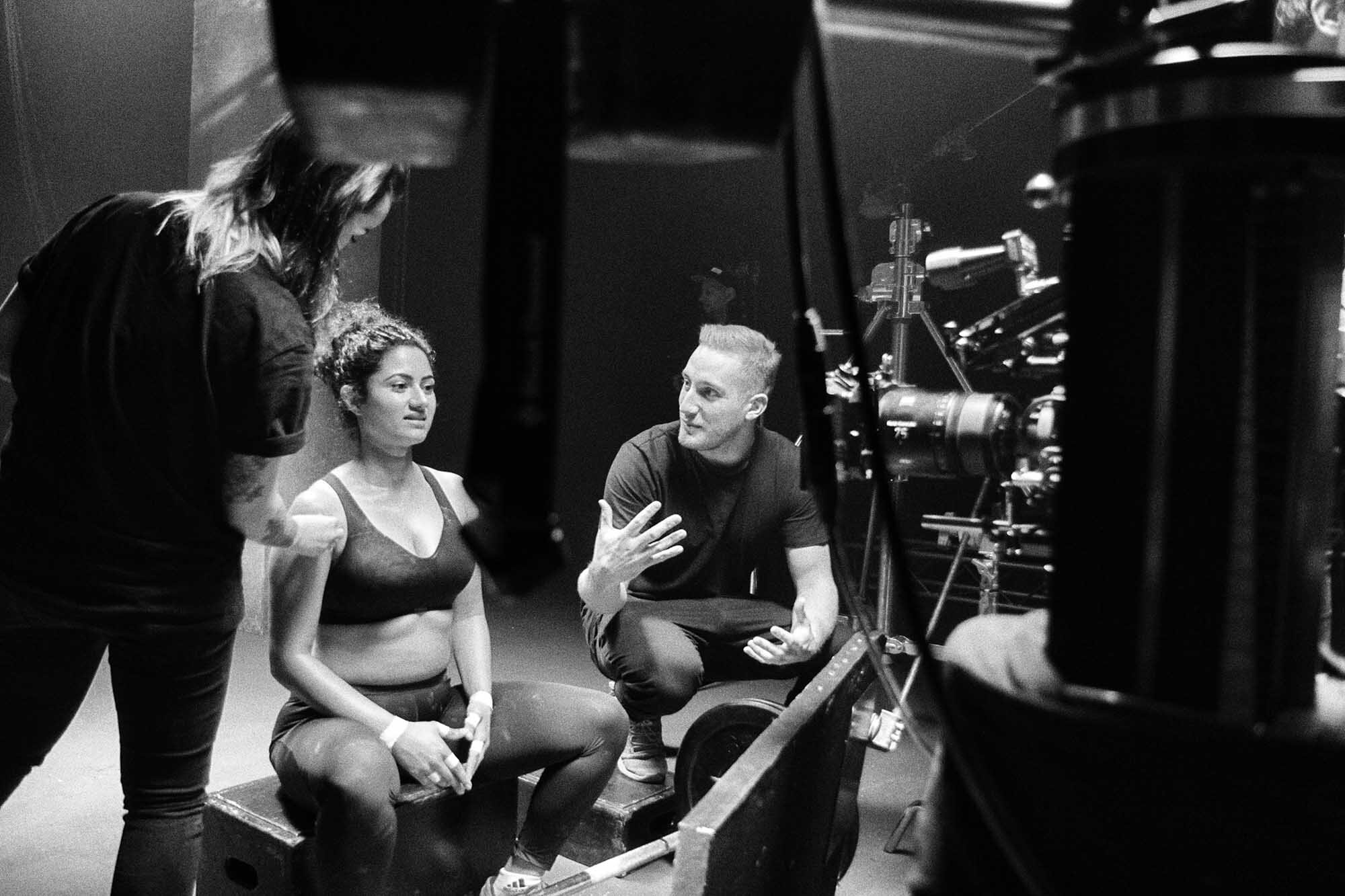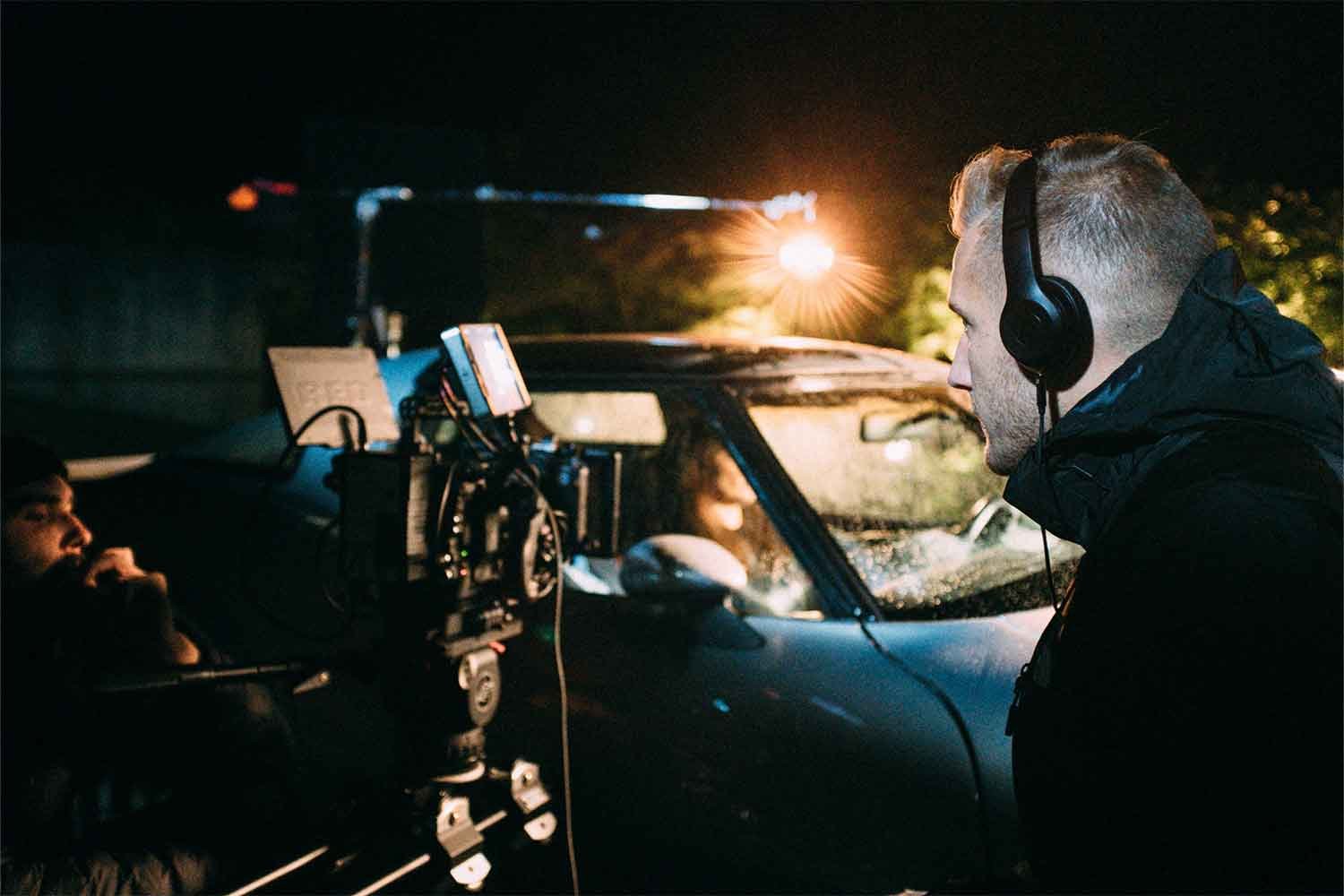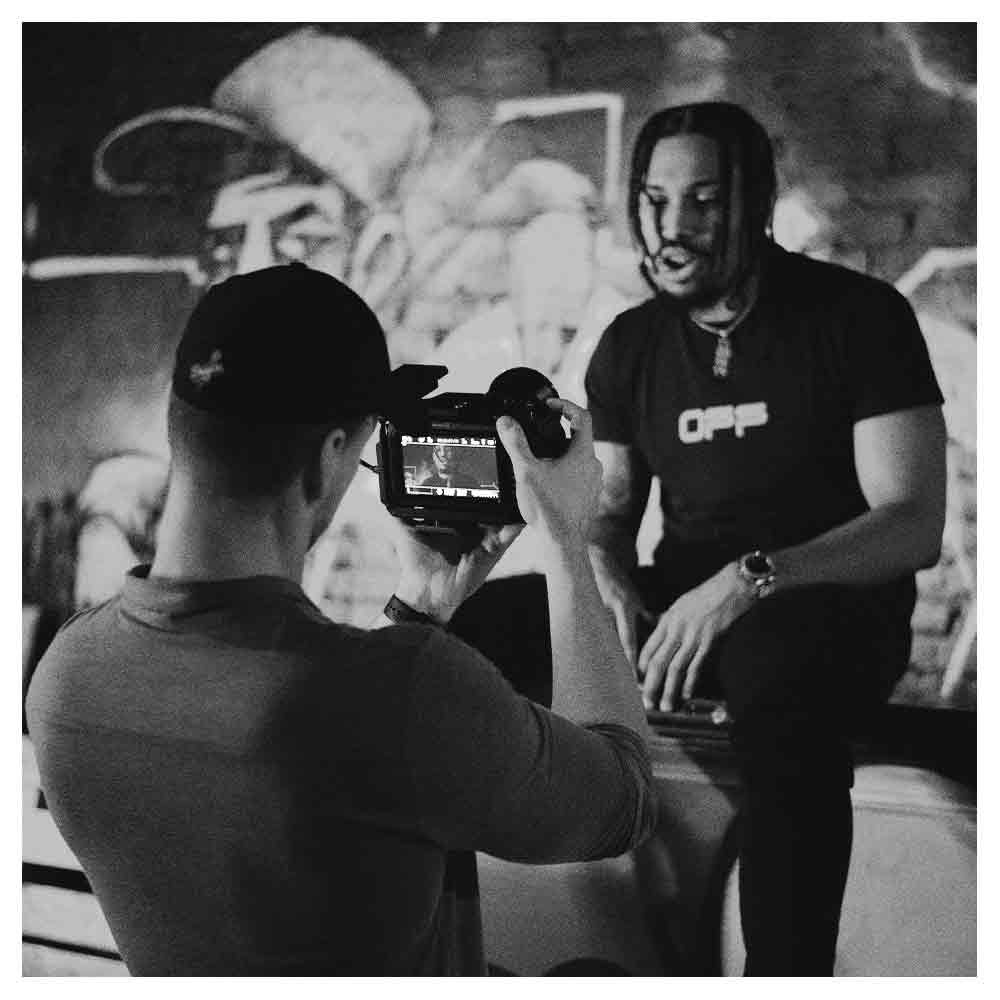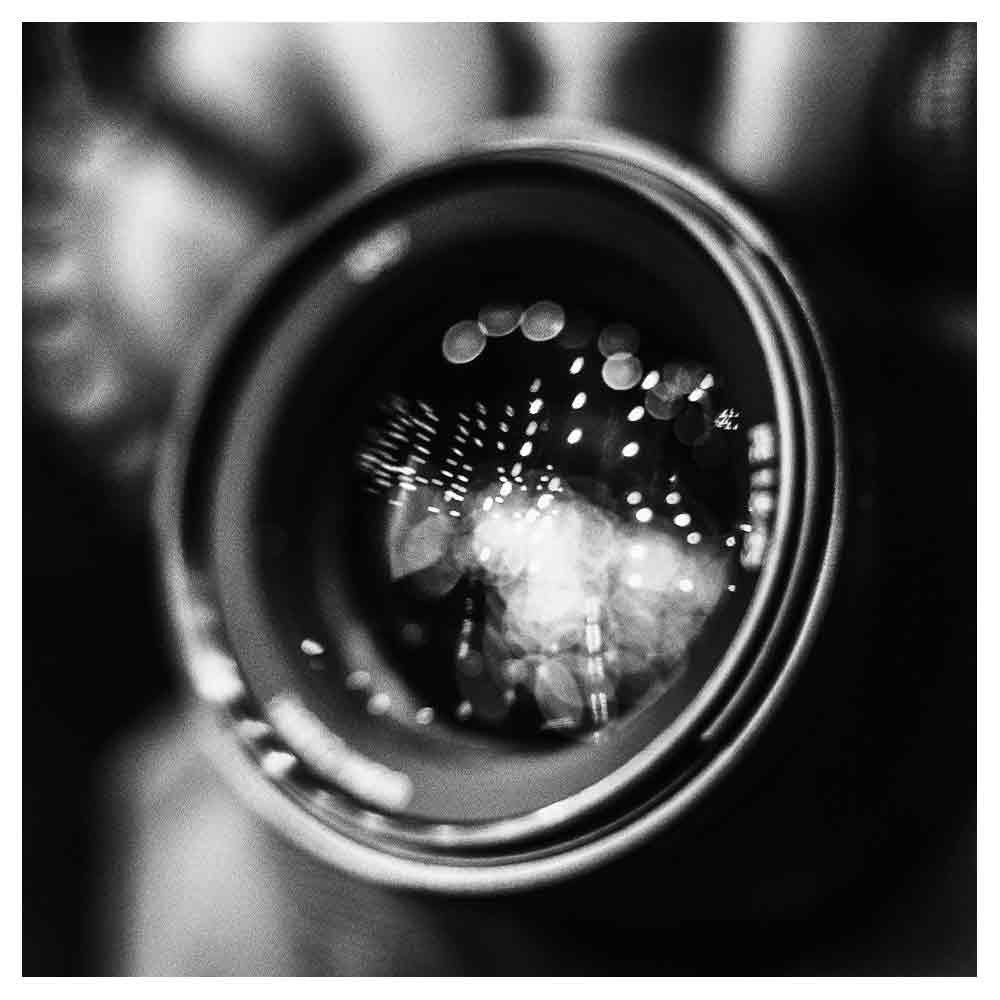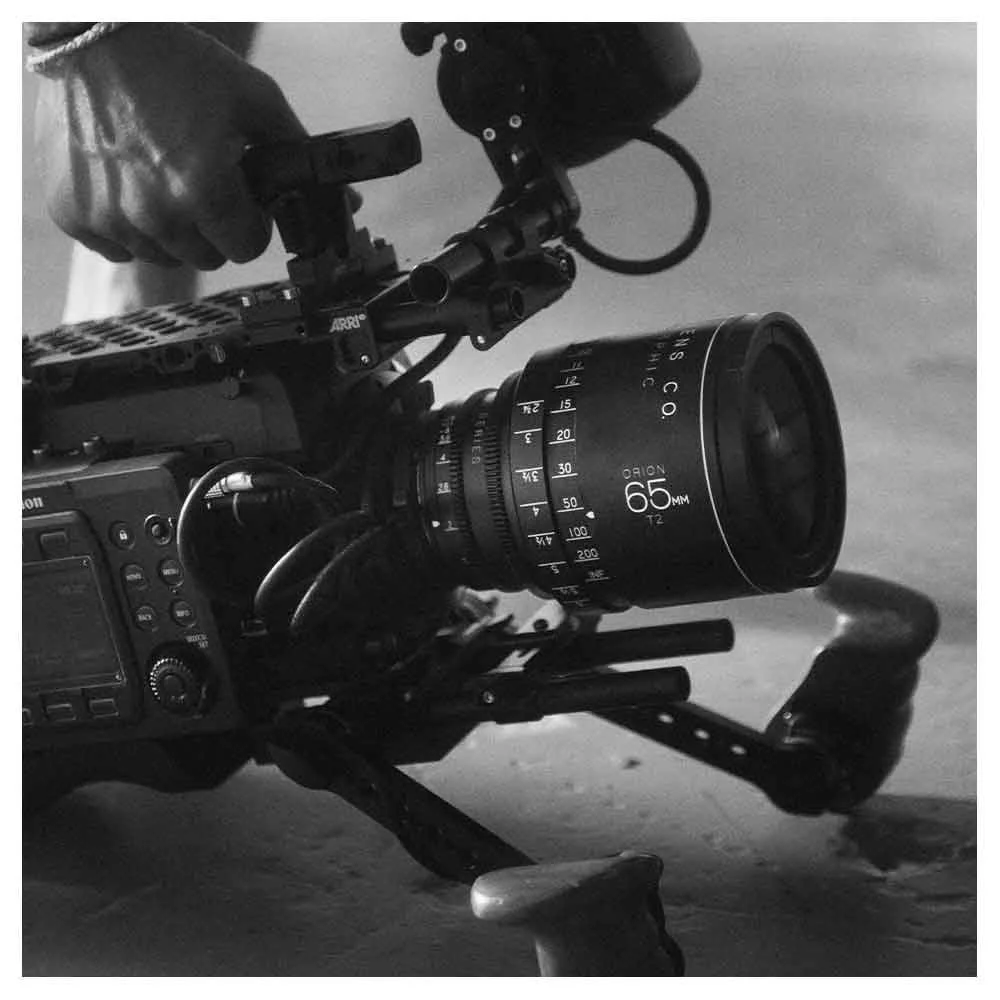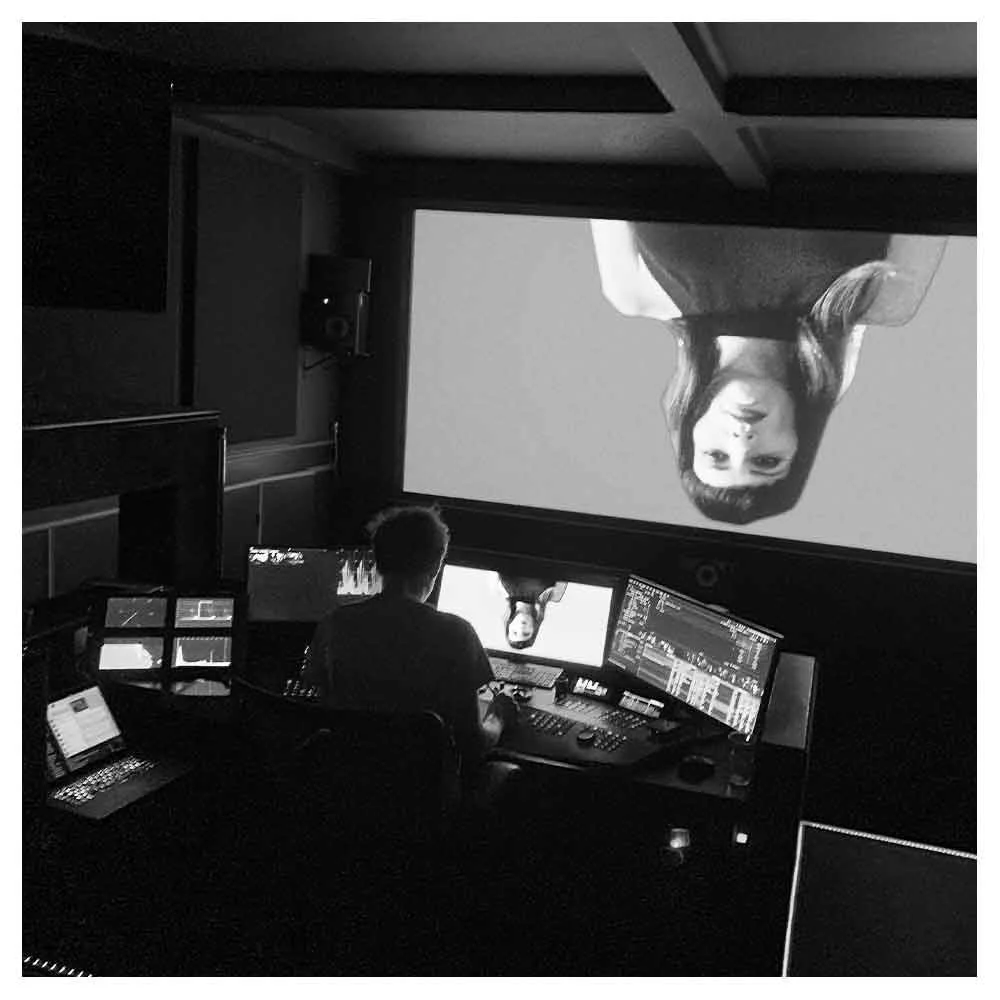10 Filmmaking Tips For Directing Actors
In my opinion, directing actors is one of the most challenging aspects of directing movies, short films, music videos, fashion films, commercials, and other content formats.
In this article, I wanted to share ten filmmaking tips and techniques for directing actors based on my experience and best practices. I hope these ten tips will contain a nugget of knowledge gold for you and help you ease this aspect of the filmmaking process and become a better director.
Table of contents:
1. Directing actors is all about trust.
In my experience, directing actors and other cast members is all about a relationship of trust. Actors, models, and non-actors want to know that you - the film director - have their back and help them deliver their best performance.
They want to know they’re safe with you to open themselves up in front of the camera lens and connect with the other players.
Establish trust before production.
After casting, I think the best way to create trust is to establish a relationship with your cast before the film shoot so they can buy into you as the director and your vision for the project and work towards the same goal.
To do this, I usually try to allocate some time to get to know the cast and learn about their (professional) backgrounds, interests, and strengths during lunch, dinner, or extended zoom calls. This will give me a better understanding of how to utilize their talents on the film set.
I believe the better you know and trust each other, the more likely the actors and other cast members will follow your direction and open up in front of the camera.
2. Great performances need actionable direction.
My biggest mistake at the beginning of directing actors was giving non-usable, result-orientated pieces of direction. For example, “Can you bring it down or take it up a notch? Can you be happier or angrier?”
Directing is Speaking two different languages simultaneously.
Like me, many directors make the mistake of giving non-usable, result-orientated directions. I believe it's because you have to speak two different languages simultaneously on a film set to communicate an idea—technical and emotional language.
While communicating with the technical film crew members, these result-orientated directions can make total sense. If you say take it up a notch to the gaffer (the person responsible for setting up the lights), they will know exactly what you mean. But for communicating with most actors, these directions are too vague for interpretation because they can mean too many things.
Meaning—what I believe to be angrier can be totally different from what you think to be angrier. When I gave these directions at the beginning, the cast didn’t give me the performances and certain emotions I was looking for, and that caused frustration.
real-life experiences trigger real-life emotions.
What you want to do instead is give the actors an emotional language that can be translated into physical actions. Instead of saying, “Play it angrier,” you can provide a motivation to be angrier.
This can be a mental direction, like asking them to think about somebody they hate while playing the character in the scene. Or this can be a physical direction like doing 20 push-ups, going on a verbal rant about something that irritates them, screaming their lungs out for as long as possible, and then diving straight into the scene.
It’s about finding directions and emotional events that trigger authentic emotions based on real-life experiences.
3. Ask how the Actors want to be directed.
As every actor has a different acting style, preference, and experience, how do you know exactly how much input, feedback, and direction you need to give to elicit the correct performance?
I discovered that one of the easiest ways to find the directing sweet spot is by asking how the actor, model, or non-actor wants to be directed! It sounds so simple, and it is!
Generally speaking, a model is OK by getting an actionable direction—look here, look over there, walk this direction, do X when that happens.
On the other hand, actors can desire more context to better understand the character’s motivation for doing something so they can play it accordingly. But it can also be the other way around!
To ensure you hit the sweet spot, simply ask them how they want to be directed so they can deliver you precisely the performance you are looking for.
4. Be specific in your direction.
In my experience, if you don't know what you want and give vague directions, people don't know how to give you what you’re looking for. If you're indecisive as a director, your cast and crew will become nervous.
I’ve learned that the best way to communicate your ideas is to have a strong and confident vision and be decisive when giving directions. This will help the actors and models understand what is expected of them and ensure they deliver the desired results.
I’ve learned that the more prepared I was before stepping on a film set with a proper director’s treatment, storyboard, shot list, and scene breakdown in my back pocket, the more confident I was and the easier it was to give clear directions, allow room for creative interpretations, and pivot if something unexpected happened.
I believe that thinking about what you want while experimenting and discovering possibilities with the cast and crew is okay, but nothing is worse for people than indecision.
5. Create a relaxed working environment.
A film set with all its bells and whistles can be an intimidating environment to perform and open up emotionally. I believe that the more comfortable you can make the actor and other cast members feel, the better performance they will give you.
This means no screaming, no shouting, and nurturing positivity. Even if it's chaotic and everything is going wrong, if you stay relaxed and friendly to people, they will still help you to create what you want.
To create a collaborative atmosphere on set, you can do the following:
Encourage open communication and dialogue between all members of the cast and crew.
Be open to feedback and suggestions from the actors.
Create a safe and supportive environment where actors feel comfortable taking risks and trying new things.
Foster a sense of teamwork and collaboration among the cast and crew.
6. Use other actors to create an authentic response.
Another cool trick for creating realistic reactions is giving directions to another actor to create improvised moments that create an authentic response that wasn’t in the written story but can make the project even better!
Especially when the actors have done a particular scene or action a dozen times, this can be a great way to find spontaneity because it will cause one of the actors to react unprepared.
7. Use storytelling to give direction.
If you want people to open up for you in front of the camera, I believe you need to open up as the director to them.
I’ve discovered that one of the best ways to do that is by telling a personal anecdote regarding a particular topic that helps you communicate your vision and ideas for the project and base your directions on that story.
Personal anecdotes are perfect for giving directions.
A few years ago, I directed a diversity commercial for Adidas. The project was essentially about discriminating against minority groups.
As a white male in western society, I have never experienced the type of discrimination Adidas wanted to portray in this commercial. On the other hand, I was familiar with rejection and the anger and frustration that comes with it and realized that everybody encounters rejection in life from time to time.
So, in preparation for the shoot, I talked to the cast members about my career journey, how I encountered many project rejections over the years, and how I used anger and frustration to motivate me.
I told the cast members that during the shoot, I would ask them to think about the people from their past saying to them that they couldn’t do something and use that anger while performing their sport.
Eventually, it turned out to be the perfect direction, and every cast member portrayed the perfect emotion on set!
8. Don’t stop the Camera too soon.
At the beginning of directing actors, I was sometimes tempted to stop the performance too soon, for example, right after walking out of frame.
Later I learned that sometimes those moments at the end of shooting a take when the conversation is over, or the characters linger in obscurity are super valuable in the edit!
Tell the actors in advance only to stop playing after you said ‘CUT.’ When the scene is over, let the camera record for three to five more seconds and then cut the scene. You’ll thank yourself later in the edit!
9. Encouragement is vital.
I’ve learned that it can be helpful to do regular check-ins with the cast during the production to check how they feel and if they need anything specific to be comfortable in front of the camera.
I also believe encouragement is vital to directing because providing the cast and crew with validation that they’re doing a good job will encourage and motivate them. So in the middle of all the film set chaos, it's essential to say simple things like, ‘Great take!’ or ‘Awesome, we got it!’
This will give people the feeling that they’re doing a good job and that their work is respected and appreciated.
10. Be patient.
Directing actors can sometimes be frustrating, but I believe it's important to remember that not everyone will catch on immediately. Don't expect perfection from your actors, models, and non-actors immediately. Give them some time to process your direction and adjust accordingly.
Allow them the opportunity to grow and improve with each rehearsal and take. Along the way, give constructive and helpful feedback. When giving feedback to actors, do it in a quiet private conversation, and tweak the direction to find a good performance. Not everybody on set needs to know the actor didn’t get it right.
Critiques should be aimed at improving the actor's performance, not tearing the performer down.
Final Thoughts on directing actors
Wrapping up, I hope these ten tips will help you effectively direct actors and models so they can give strong performances and contribute to your vision.
Remember that things constantly change when filming, so be prepared to adjust your approach on the fly if necessary. Don’t get married to your ideas; stay flexible to make the most of any situation.
At the end of the day, directing actors all comes down to confidently communicating ideas and knowing what you want so the actors can give you what you need.
Acquiring more directing actor knowledge, Experience, And Skills.
To acquire more knowledge about directing actors, you can follow a film acting class to learn how to communicate ideas with your actors better and understand the actor' world from their perspective.
If that’s too intimidating, I suggest getting your hands on a copy of the book ‘Directing Actors - 25th Anniversary Edition: Creating Memorable Performances for Film and Television’ by Judith Weston.
I think this is the ultimate 'How-to Direct Actors Bible' for film directors that you should read at least once during your professional career. It will give you a good understanding of how to direct actors, create imaginary circumstances, trigger their instincts, do a script analysis, and create memorable performances that make up for a great film.
A while ago, I also wrote an article with ten quick tips for filming child actors. If you’re interested, you can read that here!
Frequently Asked Questions About Directing Actors (FAQs)
How do I get the performance I want from my actors?
There are a few key strategies for getting the performance you want from your actors:
Build a strong relationship with your actors. This helps to create a sense of trust and collaboration, making it easier for them to open up in front of the camera, leading to better performances.
Give specific and constructive feedback. Rather than simply telling an actor that their performance was "bad," try to identify specific areas that can be improved and offer concrete suggestions for how to improve.
Rehearse, rehearse, rehearse! The more time you spend rehearsing, the more comfortable and confident the actors will be with the material.
How do I handle difficult actors?
Dealing with difficult actors can be challenging, but there are a few strategies you can try:
Be open and honest with the actor. If they are behaving in a way that is disrupting the process, calmly and respectfully communicate your concerns to them.
Try to understand their perspective. There may be a reason for their behavior, and if you can get to the root of the issue, you may be able to address it more effectively.
Set boundaries. When it comes to communication, I believe there are two golden rules. The first is to take no shit but do no harm. And the second is to treat people the way you want to be treated yourself. Communicating clear boundaries and expectations at the start with all of your actors in a firm but fair way will help you set the boudaries.
How do I direct actors with different levels of experience?
Directing actors with different levels of experience can be a balancing act. Here are a few tips:
Offer more guidance to actors who are newer to the process. This might include breaking down the scene in more detail or offering a more specific direction.
Give more experienced actors more freedom to explore and experiment with their performances.
Be open to feedback from all of your actors. Even experienced actors may have valuable insights that can help shape the final product.
How do I work with actors who have different acting styles?
Working with actors who have different acting styles can be rewarding, but it can also be a challenge. Here are a few tips:
Be open to different approaches.
Different acting styles can bring new and interesting perspectives to a scene.
Be willing to adapt your own style as a director. You may need to find new ways of communicating with actors with different acting styles.
Encourage collaboration and respect between actors with different styles. If you can create a sense of teamwork and mutual respect, it can help actors with different styles work effectively together.
How do I deal with actors who are struggling with their lines?
Encourage the actor to take breaks and give them time to practice their lines on their own.
Offer line reading suggestions or try breaking the scene down into smaller chunks to make it easier for the actor to remember.
Consider working with a dialogue coach or enlisting the help of a fellow actor to run lines with the struggling actor.
How do I handle actors who are over-rehearsed or over-prepared?
Encourage the actor to try different approaches to the material and to be open to experimenting and improvising.
Encourage the actor to stay in the moment and react to their scene partner rather than sticking too closely to a preconceived idea of the scene.
Remind the actor that there is value in taking risks and being spontaneous.
How do I keep my actors motivated and engaged during a long shoot?
Make sure to take breaks and give the actors time to rest and recharge.
Encourage the actors to stay hydrated and well-fed.
Keep the mood light and positive on set.
Recognize and praise the actors' hard work and dedication.
Be open to feedback and suggestions from the actors about making the shoot more enjoyable for everyone.

